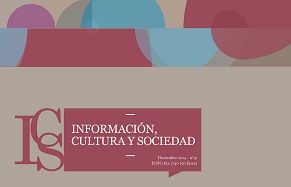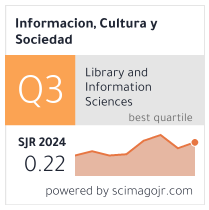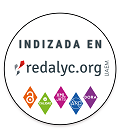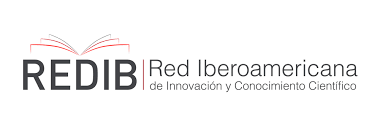Application of neuroeducation and Design Thinking as a didactic strategy in the university classroom. Experience in the Quantitative Methods I course of the Library and Information Sciences course at the University of Costa Rica
Abstract
The present study arises from the need to innovate in university education through the interdisciplinary work of two professors: one of mathematics and the other of library science with the implementation of a didactic strategy in the course Quantitative Methods I of the Library and Information Sciences career (EBCI) of the University of Costa Rica. The research describes a practical case of pedagogical mediation, from its planning, execution and evaluation, integrating the theory of Design Thinking (DT) and theoretical contributions of Neuroeducation to achieve learning of basic concepts. of functions in a mathematics class. Among the results it is found that for 86% of the students the strategy used in the lesson motivated during the class, being valued in general with 9.59 points based on 10. In conclusion, this study has allowed the reflection of the didactic strategies that can be developed in a class with the support of Neuroeducation and how it can be nourished from other dimensions such as the DT methodology, without losing sight of what is essential in the educational field: meaningful learningDownloads
References
Armstrong, Craig. 2016. Teaching innovation through empathy: Design thinking in the undergraduate business classroom. En Management Teaching Review. Vol. 1, no. 3, 164-169. <https://doi.org/10.1177/2379298116636641>
Benavides, Karla M., Gaudy P. Aguilar y Yanixa M. Benavides. 2021. Aplicación de Design Thinking como metodología para el aprendizaje en cursos universitarios. En VIII Jornadas Iberoamericanas de Innovación Educativa en el Ámbito de las TIC y las TAC. (8º: 18 y 19 de noviembre de 2021: Las Palmas de Gran Canaria). Trabajos presentados. <https://repositorio.una.ac.cr/bitstream/handle/11056/23462/Art%C3%ADculo_Aplicacion_design_thinking.pdf?sequence=1&isAllowed=y> [Consulta: 29 abril 2023].
Blakemore, Sarah-Jayne y Uta Frith. 2020. Cómo aprende el cerebro. Las claves para la educación. 7a ed. Barcelona: Planeta editorial.
Bueno i Torrens, David. 2021. Neurociencia para educadores. Todo lo que los educadores siempre han querido saber sobre el cerebro de sus alumnos y nunca nadie se ha atrevido a explicárselo de manera comprensiva y útil. 7a ed. Barcelona: Octaedro.
Chávez, Zulay y Héctor Martínez. 2021. Gestión del conocimiento, creatividad e innovación en la educación universitaria venezolana. En Negotium: revista de ciencias gerenciales. Vol. 16, no. 48, 5-17. <https://dialnet.unirioja.es/servlet/articulo?codigo=7984402> [Consulta: 29 abril 2023].
De la Ossa, Jaime. 2022. Habilidades blandas y ciencia. En Revista colombiana de ciencia animal. Vol. 14, no. 1, e945. <http://www.scielo.org.co/pdf/recia/v14n1/2027-4297-recia-14-01-1.pdf> [Consulta: 29 abril 2023].
Deloitte Global. 2018. Preparing tomorrow’s workforce for the fourth industrial revolution. For business: a framework for action. <https://www.deloitte.com/content/dam/assets-shared/legacy/docs/research/2022/gx-preparing-tomorrow-workforce-for-4IR.pdf> [Consulta: 29 abril 2023].
Díaz Barriga Arceo, Frida y Gerardo Hernández Rojas. 2010. Estrategias docentes para un aprendizaje significativo. Una interpretación constructivista. 3a ed. México: McGraw-Hill.
Duarte Hueros, Ana María. 2000. Innovación y nuevas tecnologías: implicaciones para un cambio educativo. En XXI Revista de Educación. No. 2, 129-146. <https://core.ac.uk/download/pdf/60635722.pdf> [Consulta: 29 abril 2023].
Escuela de Bibliotecología y Ciencias de la Información. 2022. Programa del curso BI-1006. Métodos Cuantitativos I. Costa Rica: Universidad de Costa Rica
González Molina, María Gloria, Brenda Valentina Enciso Galindo, Luis Felipe Arciniegas Hurtado, Paula Andrea Tovar Arévalo, Paula Ivette Bonza Forero y Lina Paola Yiseth Arévalo Peña. 2020. Importancia de las habilidades blandas para la empleabilidad y sostenibilidad del personal en las organizaciones. En Encuentro con Semilleros, Aportes y Reflexiones. Vol. 2, no. 2. <https://journal.poligran.edu.co/index.php/encuentros/article/download/2646/2608/6529> [Consulta: 29 abril 2023].
Guerrero, Rafa. 2021. El cerebro infantil y adolescente. Claves y secretos de la Neuroeducación. Barcelona: Libros Cúpula
Guillén, Jesús C. 2017. Neuroeducación en el aula. De la teoría a la práctica. Carolina del Sur: CreateSpace.
Guillén Cordero, Norieth y Cristel Astorga Aguilar. 2020. Desarrollo de habilidades blandas en el estudiantado mediante la actividad académica procesos prácticos para la formación de docentes en educación comercial. En Revista internacional de administración de oficinas y educación comercial. Vol. 5, no. 2. <https://www.revistas.una.ac.cr/index.php/respaldo/article/download/15451/21631/> [Consulta: 29 abril 2023].
Jaramillo, Patricia. 2005. Uso de tecnologías de información en el aula, ¿qué saben hacer los niños con los computadores y la información? En Revista de Estudios Sociales. No. 20, 27-44. <https://www.redalyc.org/pdf/815/81502003.pdf> [Consulta: 29 abril 2023].
Latorre-Cosculluela, Cecilia, Sandra Vásquez-Toledo, Ana Rodríguez-Martínez y Marta Liesa-Orús. 2020. Design thinking: creatividad y pensamiento crítico en la universidad. En Revista electrónica de investigación educativa. Vol. 22, e28. <https://doi.org/10.24320/redie.2020.22.e28.2917>
Leverenz, Carrie S. 2014. Design thinking and the wicked problem of teaching writing. En Computers and Composition. Vol. 33. <https://www.sciencedirect.com/science/article/abs/pii/S8755461514000334> [Consulta: 29 abril 2023].
Macanchí Pico, Mariana Lucía, Bélgica Marlene Orozco Castillo y María Angélica Campoverde Encalada. 2020. Innovación educativa, pedagógica y didáctica: concepciones para la práctica en la Educación Superior. En Universidad y Sociedad. Vol. 12, no. 1, 396-403. <https://rus.ucf.edu.cu/index.php/rus/article/view/1465> [Consulta: 29 abril 2023].
Mora, Francisco. 2021. Neuroeducación. Solo se puede aprender aquello que se ama. 3a ed. Madrid: Alianza Editorial.
Newberry, J. 2016. Adventures in teaching millennials: Population health, community engagement, and Design Thinking for first year medical students. En Annals of Emergency Medicine. Vol. 68, no. 4. <https://www.annemergmed.com/article/S0196-0644(16)30875-7/fulltext> [Consulta: 29 abril 2023].
Rigo, Daiana Yamila y Ana Elisa Riccetti. 2020. Innovar y comprometer en los espacios de formación docente universitario: estudios sobre el modelo de enseñanza invertida en el profesorado en educación física. En Revista Digital de Educación y Formación del Profesorado. No. 17. <https://ri.conicet.gov.ar/handle/11336/145585> [Consulta: 29 abril 2023].
Rodríguez-Valerio, Daniela. 2022. Creación de productos innovadores para bibliotecas aplicando Design Thinking: experiencia en un curso virtual de mercadeo. En Investigación bibliotecológica. Vol. 36, no. 92, 13-31. <http://dx.doi.org/10.22201/iibi.24488321xe.2022.92.58594>
Ruiz Martín, Héctor. 2021. Aprendiendo a aprender. Mejora tu capacidad de aprender descubriendo cómo aprende tu cerebro. Madrid: Penguin Random House.
Saldarriaga-Zambrano, Pedro J., Guadalupe del R. Bravo-Cedeño y Marlene R. Loor-Rivadeneira. 2016. La teoría constructivista de Jean Piaget y su significación para la pedagogía contemporánea. En Domino de las Ciencias. Vol. 2, no. 3 Especial, 127–137. <https://dialnet.unirioja.es/servlet/articulo?codigo=5802932> [Consulta: 29 abril 2023].
Universidad de Costa Rica. 2023. Marco estratégico. <https://www.ucr.ac.cr/acerca-u/marco-estrategico.html> [Consulta: 29 abril 2023].
Van de Grift, Tim y Renske Kroeze. 2016. Design thinking as a tool for interdisciplinary education in health care. En Academic Medicine. Vol. 21, no. 9, 1234-1238. <https://doi.org/10.1097/ACM.0000000000001195>
Authors publishing in this journal acknowledge the conditions below:
- Authors retain the copyright of their work while they transfer the right of the first publishing to the journal, under the Creative Commons Attribution-ShareAlike 4.0 International (CC BY-SA 4.0) Licence, which allows third parties to reproduce them under the condition that express mention is given to the author and to its original publication in the journal.
- Authors may enter into other contractual and independent arrangements for the non-exclusive distribution of the version of the article published in this journal (for instance, it can be published in an institutional repository or in a book). In any case, an express mention should be given to its first publication in the journal.
- It is permitted and encouraged to publish online the articles (for example, on institutional or personal pages).


























